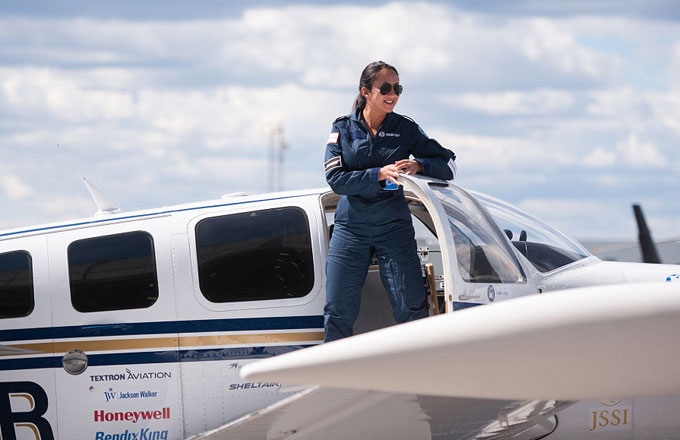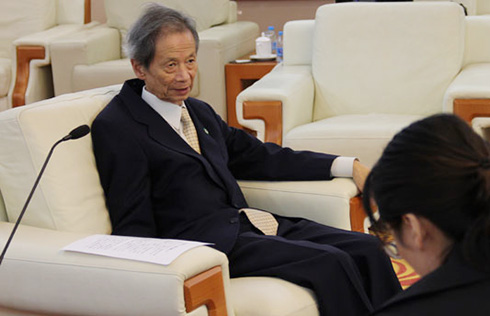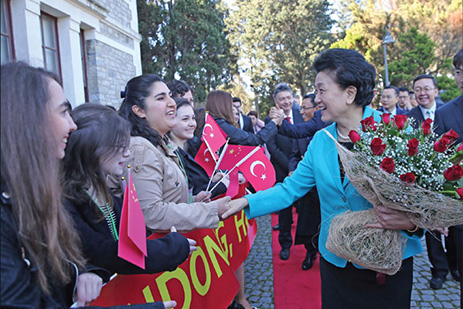Choked by traffic, Bangkok revs up to beat air pollution
BANGKOK - There are two pictures Thai air pollution expert Supat Wangwongwatana likes to show whenever he talks about Bangkok's transition, in a little over a decade, from a city blanketed in smog to one boasting clear blue skies.
The first, taken in the mid-1990s, shows the skyline of downtown Bangkok. Most buildings are in silhouette, shrouded in a thick layer of haze. The Baiyoke Tower, back then the city's tallest building, was still under construction.
The second, taken a decade later from a similar angle, looks dramatically different. The sky is blue, the clouds are visible, and the buildings bathed in sunlight.
"Sulphur in diesel fuel and gasoline back in the early 1990s was 10,000 parts per million. Today, it is less than 50 ppm," said Supat, referring to a natural component of crude oil that contributes to air pollution.
"That early technology enabled us to reduce emissions," he said, citing processes for producing cleaner fuel and catalytic converters that make exhaust pipe fumes less toxic.
The World Health Organization (WHO) calls air pollution "a public health emergency". An estimated 6.5 million deaths, nearly 12 percent of all global deaths, were associated with indoor and outdoor air pollution in 2012, the bulk in the Western Pacific and Southeast Asian regions, WHO data shows.
"If nothing was done at all during the last 20, 25 years, I cannot imagine what Bangkok would be like now. People would probably be sick from air pollution," Supat shuddered.
The former director general of the Pollution Control Department (PCD) at Thailand's Ministry of Natural Resources and Environment was one of a number of technocrats who led efforts to rein in Bangkok's rising air pollution levels in the 1990s.
They eliminated lead in fuel, imposed emissions controls based on European norms, and regulated construction sites, despite stiff resistance from powerful oil refineries and the automobile industry.
Taxis now run on cleaner liquefied petroleum gas or compressed natural gas, and motorcycles no longer spew blacksmoke from their tailpipes.
Experts say these efforts have helped Bangkok avoid the situation of other mega cities such as Beijing and Delhi, where air pollution has reached such hazardous levels that even healthy people can fall ill simply from being outside.
They warn, however, that Bangkok risks dangerous air pollution levels again due to residents' insatiable appetite for vehicles. Nearly 49,000 people died from air pollution in Thailand in 2013, a joint World Bank and University of Washington report said.
While most locations in central Bangkok are well within safe levels as defined by Thailand's Air Quality Index (AQI), it does not factor in PM2.5, fine particles that pose the greatest risks to human health. Bangkok's annual average of those particles is 2.4 times the WHO's safety threshold, the UN agency says.
"PM2.5 can go into blood vessels and cause chronic health problems," said Tara Buakamsri, Thailand country director for Greenpeace Southeast Asia.
If you do not include those particles in the Air Quality Index, "you cannot see a comprehensive picture", she added.
- Sanmenxia uses lasers to detect air pollution
- Air pollution more than half of environmental complaints in China
- Sandstorm envelops Beijing, air pollution reaches dangerous level
- Chinese air pollution inspectors find problems in 285 companies
- Karamay to strengthen air pollution control
- Air pollution up in N. China



















